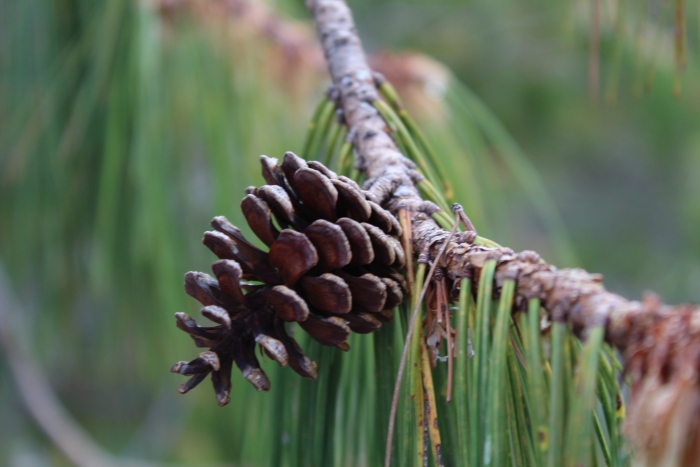Lumholtz’s Pine
(Pinus lumholtzii)
Lumholtz’s Pine (Pinus lumholtzii)
/
/

Rodolfo Maximiliano Gutiérrez-Sánchez
CC BY 4.0
Image By:
Rodolfo Maximiliano Gutiérrez-Sánchez
Recorded By:
Copyright:
CC BY 4.0
Copyright Notice:
Photo by: Rodolfo Maximiliano Gutiérrez-Sánchez | License Type: CC BY 4.0 | License URL: http://creativecommons.org/licenses/by/4.0/ | Rights Holder: Rodolfo Maximiliano Gutiérrez-Sánchez | Publisher: iNaturalist | Date Created: 2023-11-08T13:15:34-08:00 |




















Estimated Native Range
Summary
Pinus lumholtzii, commonly known as Lumholtz’s pine or pino triste, is an evergreen conifer native to the Sierra Madre Occidental range in northwestern Mexico, particularly in the states of Chihuahua, Durango, Zacatecas, Nayarit, Jalisco, and Aguascalientes. It is typically found at elevations of 5,200-9,800 feet in mixed coniferous forests, often on steep slopes and in canyons where it is an important component of the local ecosystem. This species reaches a height of 49-66 feet with a straight trunk and a conical to rounded crown. The needles are arranged in fascicles of five and can be up to 2.5 inches long, with cones that are 1.5-2.7 inches long.
Lumholtz’s pine is valued for its adaptability to high elevations and its ability to withstand cool climates with summer rainfall. It is considered endangered due to habitat loss and is listed on the IUCN Red List. In cultivation, it is used for reforestation projects and as an ornamental tree in large gardens and parks, appreciated for its attractive form and foliage. It requires well-drained soils, preferably acidic to neutral, and full sun to partial shade. While not commonly available in the nursery trade, it can be a unique addition to a collection of rare or endangered species.CC BY-SA 4.0
Lumholtz’s pine is valued for its adaptability to high elevations and its ability to withstand cool climates with summer rainfall. It is considered endangered due to habitat loss and is listed on the IUCN Red List. In cultivation, it is used for reforestation projects and as an ornamental tree in large gardens and parks, appreciated for its attractive form and foliage. It requires well-drained soils, preferably acidic to neutral, and full sun to partial shade. While not commonly available in the nursery trade, it can be a unique addition to a collection of rare or endangered species.CC BY-SA 4.0
Plant Description
- Plant Type: Tree
- Height: 20-40 feet
- Width: 10-20 feet
- Growth Rate: Slow
- Flower Color: N/A
- Flowering Season: Non-Flowering
- Leaf Retention: Evergreen
Growth Requirements
- Sun: Full Sun
- Water: Low
- Drainage: Medium, Fast
Common Uses
Drought Tolerant, Low Maintenance
Natural Habitat
Mixed coniferous forests, often on steep slopes and in canyons within the Sierra Madre Occidental range
Other Names
Common Names: Lumholtz’s Pine, Border Pine
Scientific Names: , Pinus lumholtzii, Pinus patula,
GBIF Accepted Name: